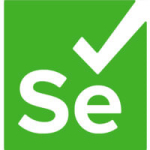LeanFT is used a lot more by our less experienced testers and developers who want to get more point-and-click type automation. Then obviously I also manage the automation team, so we use UFT for a ton of all of our XLC automation as well as anything with a UI. So we also bring it into our business functions as well. If we need to do clean-up, data entry, management of manual tasks where you're putting yourself in a UI scenario, we'll run scripts for that for productivity.
We pretty much use that to streamline workflow and enable productivity in a business context in our business unit as well as in our IT shop, so just reducing workload on IT people as well as testing. It's used pretty extensively beyond that.
I'd like to not have to use Selenium. I'd like to be able to do headless scripting and not just always be UI serving.
We're already at enterprise scale, so it's used across the enterprise. I would say that we're at that point.
I have an entire team, so I'm a director and I have an entire tools team that does that. I did get involved in the planning and the strategy of how we're going to do it. My team said that first installation is relatively easy. When we go to upgrade and migrate, that's where there's pain.
We're still trying to get the adoption on that for the user community. It's very usable though. I rate adoption pretty high, so when people are using it, for instance, UFT, I'd definitely give that a ten because we use that a lot. I'd like to see some enhancements in the product, and we're working with HPE on that.
Have a well-defined process, have a strong reporting structure, meaning in your process you want a lot of measurability. If you define your output, the reports and the questions you need to answer from what you're doing, which your process should be managing for you. In our company, we are very specific about what our executives and stakeholders want.
We have a very well-defined set of measurements that we have to take. We then put a process designed to ensure those measurements are always taken. That then allows you to deal with your outputs and your reporting structure, which then allows you to properly architect your tooling. The technology is very flexible. You have to decide as a client area how you really want to use it and that's going to start with what your business needs are the values that you're trying to get out of it.
That's the biggest advice that I have, it's not even on the technology. The technology will do great things for you if you have a plan and a structure and you know what you want it to do for you. Half the time they don't know, they want the tool to do it for them and it's the other way around. So that's what I advise people to do.
Think about it, have a vision, have a plan, tie that to outcomes, and measure those outcomes. If you're answering the right questions and asking the right questions, your technology will really enable you. You've got to look at it from that standpoint.

















Interesting article. Referring to your comment about having to update the script when the UI changes, you are correct. I have found that running in “Maintenance Mode” is the quickest way to update a script when the UI changes.